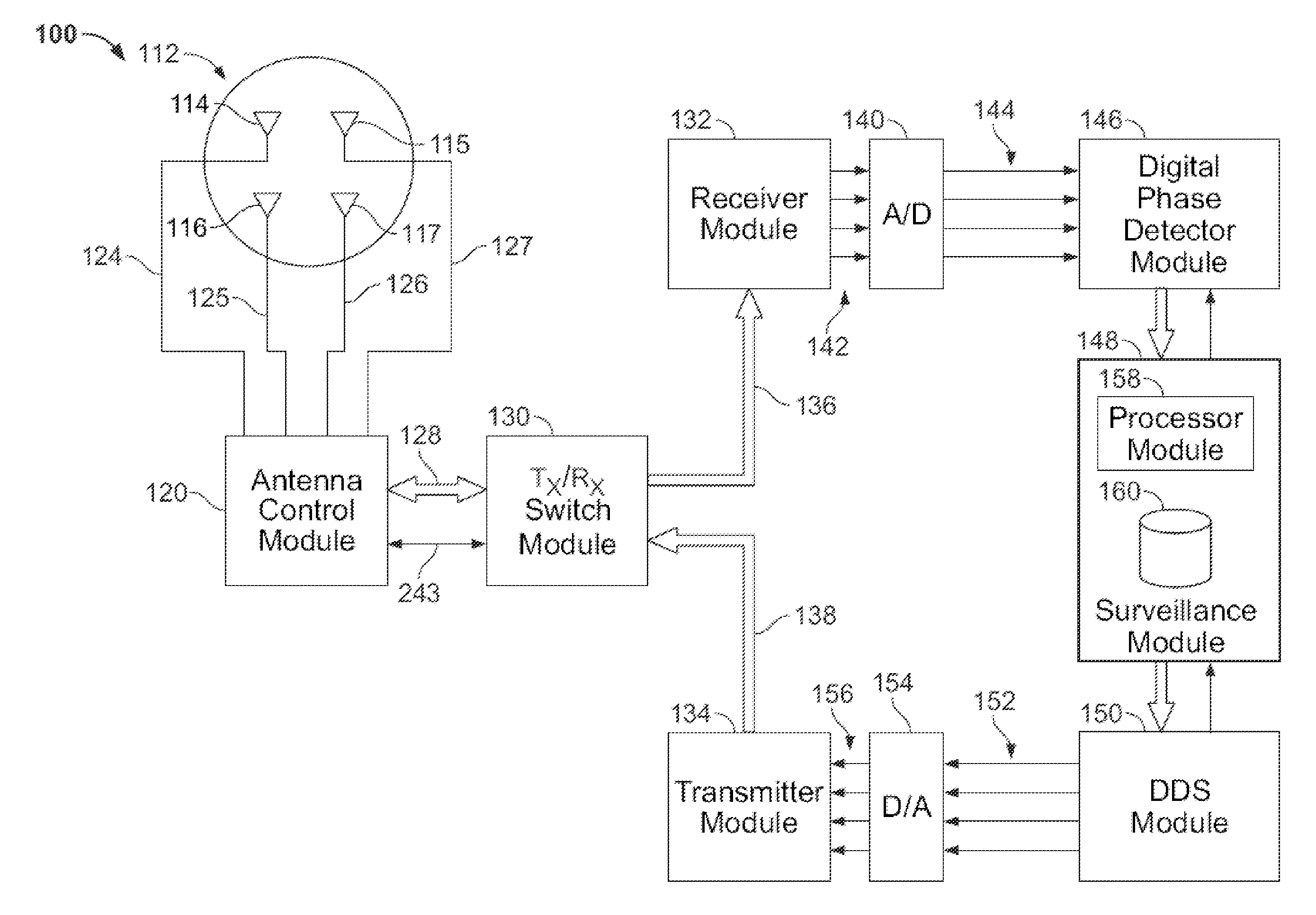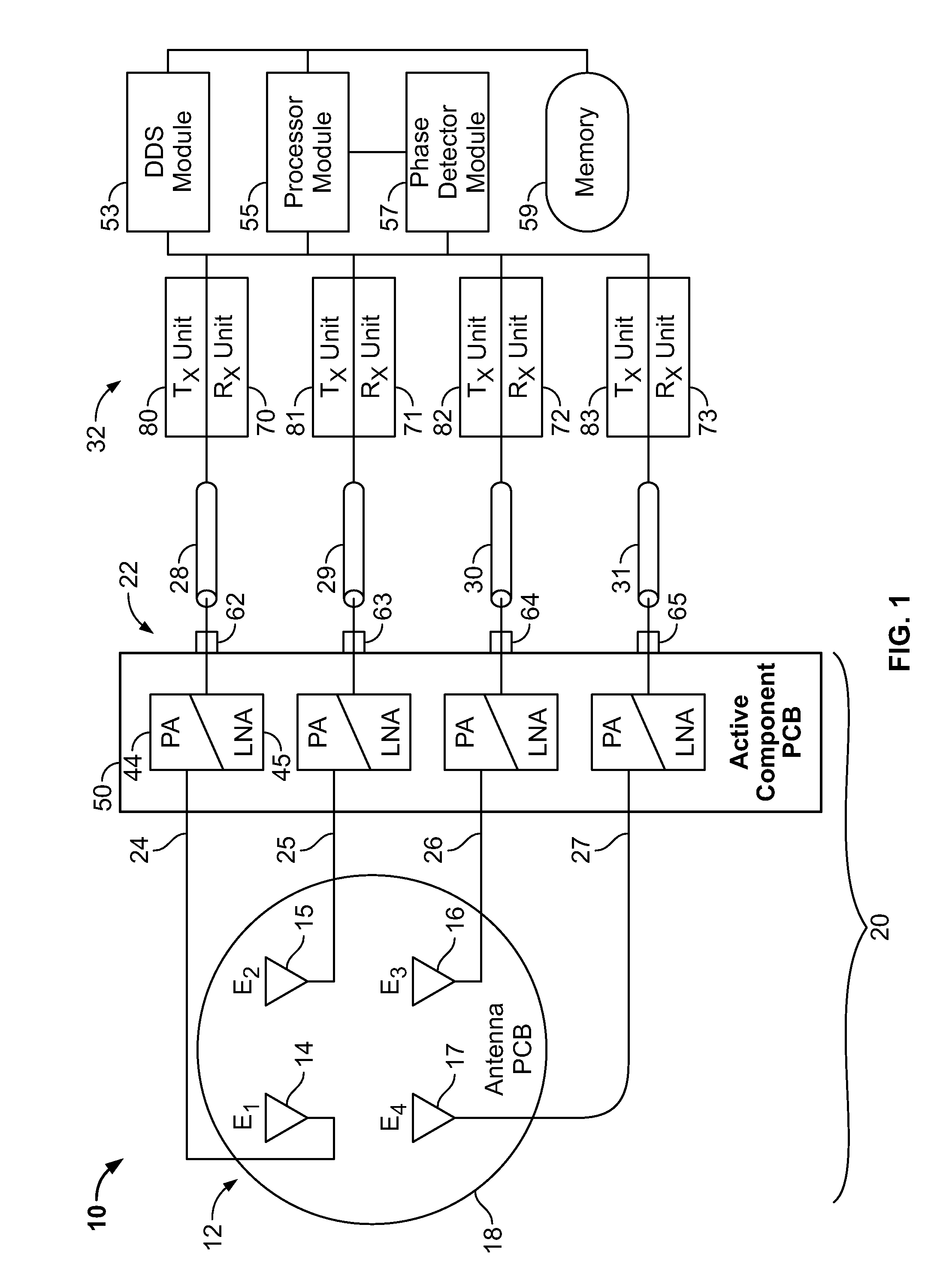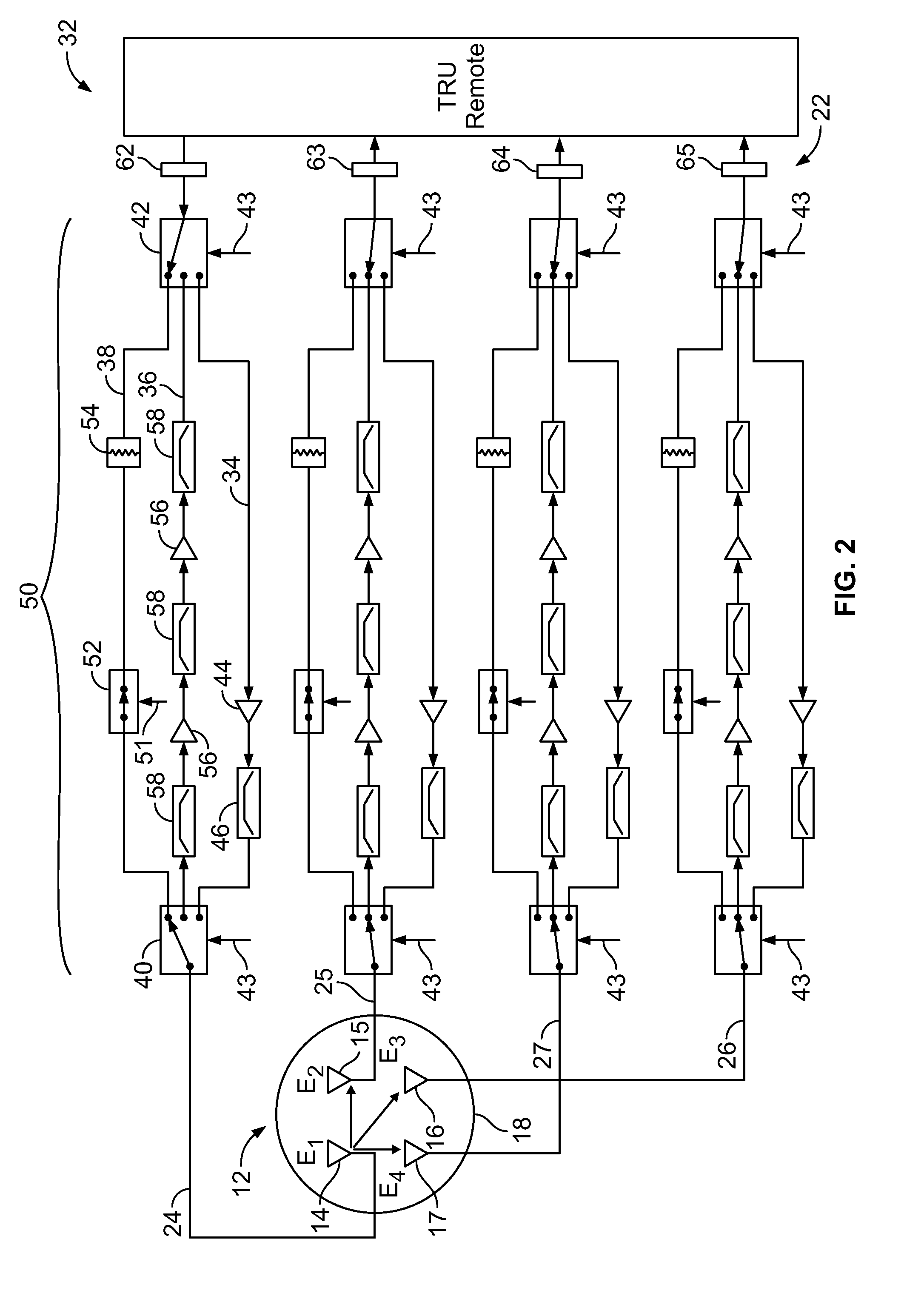Active phased array antenna for aircraft surveillance systems
a phased array, aircraft surveillance technology, applied in the direction of antennas, instruments, movable body antenna adaptation, etc., can solve the problems of system range and transmit power efficiency, transmission power loss affecting system transmit range, and the performance of the overall receiver system performance of the passive antenna array
- Summary
- Abstract
- Description
- Claims
- Application Information
AI Technical Summary
Benefits of technology
Problems solved by technology
Method used
Image
Examples
Embodiment Construction
[0022]Embodiments of the present invention are described in connection with an automatic calibration system for a Traffic Avoidance System (TAS), or Traffic Collision Avoidance System (TCAS I and TCAS II). However, it is understood that the present invention may be utilized in other aircraft surveillance applications. In one implementation, the automatic calibration system operates with a four element active phased array antenna that includes four transmitter and receiver channels.
[0023]FIG. 1 illustrates a block diagram of an active phased array antenna system 10 that is formed in accordance with an embodiment of the present invention. The system 10 includes an antenna array 12 that comprises a plurality of antenna elements 14-17, each of which is mounted to a common antenna printed circuit board (PCB) 18. The antenna array 12 forms part of an antenna module 20 that is configured to be mounted to an aircraft. The antenna elements 14-17 transmit and receive RF transmit and receive s...
PUM
 Login to View More
Login to View More Abstract
Description
Claims
Application Information
 Login to View More
Login to View More - R&D
- Intellectual Property
- Life Sciences
- Materials
- Tech Scout
- Unparalleled Data Quality
- Higher Quality Content
- 60% Fewer Hallucinations
Browse by: Latest US Patents, China's latest patents, Technical Efficacy Thesaurus, Application Domain, Technology Topic, Popular Technical Reports.
© 2025 PatSnap. All rights reserved.Legal|Privacy policy|Modern Slavery Act Transparency Statement|Sitemap|About US| Contact US: help@patsnap.com



